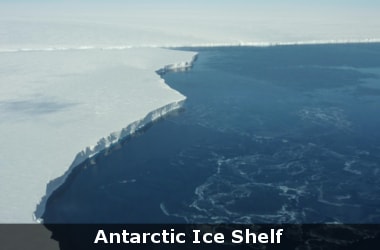
A massive ice block nearly 100 times the area of Manhattan is poised to break off Antarctica's Larsen C ice shelf, scientists reported on 6th Jan 2017.
A slow-progressing rift suddenly grew by 18 kilometres (11 miles) at the end of December, leaving the finger-shaped chunk- 350 metres thick- connected along only a small fraction of its length.
The rift has also widened, from less than 50 metres (160 feet) in 2011 to nearly 500 metres in Jan 2017.
The real danger is from inland glaciers, held in place by the floating, cliff-like ice shelves that straddle land and sea. The fragile West Antarctic ice sheet - where Larsen C is located - holds enough frozen water to raise global oceans by at least four metres (13 feet).
Recent studies have suggested that climate change may already have condemned large chunks of it to disintegration, though whether on a time scale of centuries or millennia is not known.
The breaking off, or calving, of ice shelves is a natural process, but global warming is thought to have accelerated the process.
Warming ocean water erodes their underbelly, while rising air temperatures weaken them from above. The nearby Larsen A ice shelf collapsed in 1995, and Larsen B dramatically broke up seven years later.
The ice block currently separating from Larsen C contains about 10 percent of its mass, and would be among the 10 largest break-offs ever recorded.
If all the ice held back by Larsen C entered the sea, it would lift global oceans by about 10 centimetres (four inches).
Oceans in recent decades have absorbed much of the excess heat generated by climate change, which has lifted average global air temperatures by one degree Celsius (1.8 degrees Fahrenheit).
Paris agreement- The world's nations have undertaken in the Paris Agreement.
- It was inked in the French capital in December 2015.
- It aims to to cap global warming at "well under" two degrees Celsius (3.5 degrees Fahrenheit) above pre-industrial era levels.